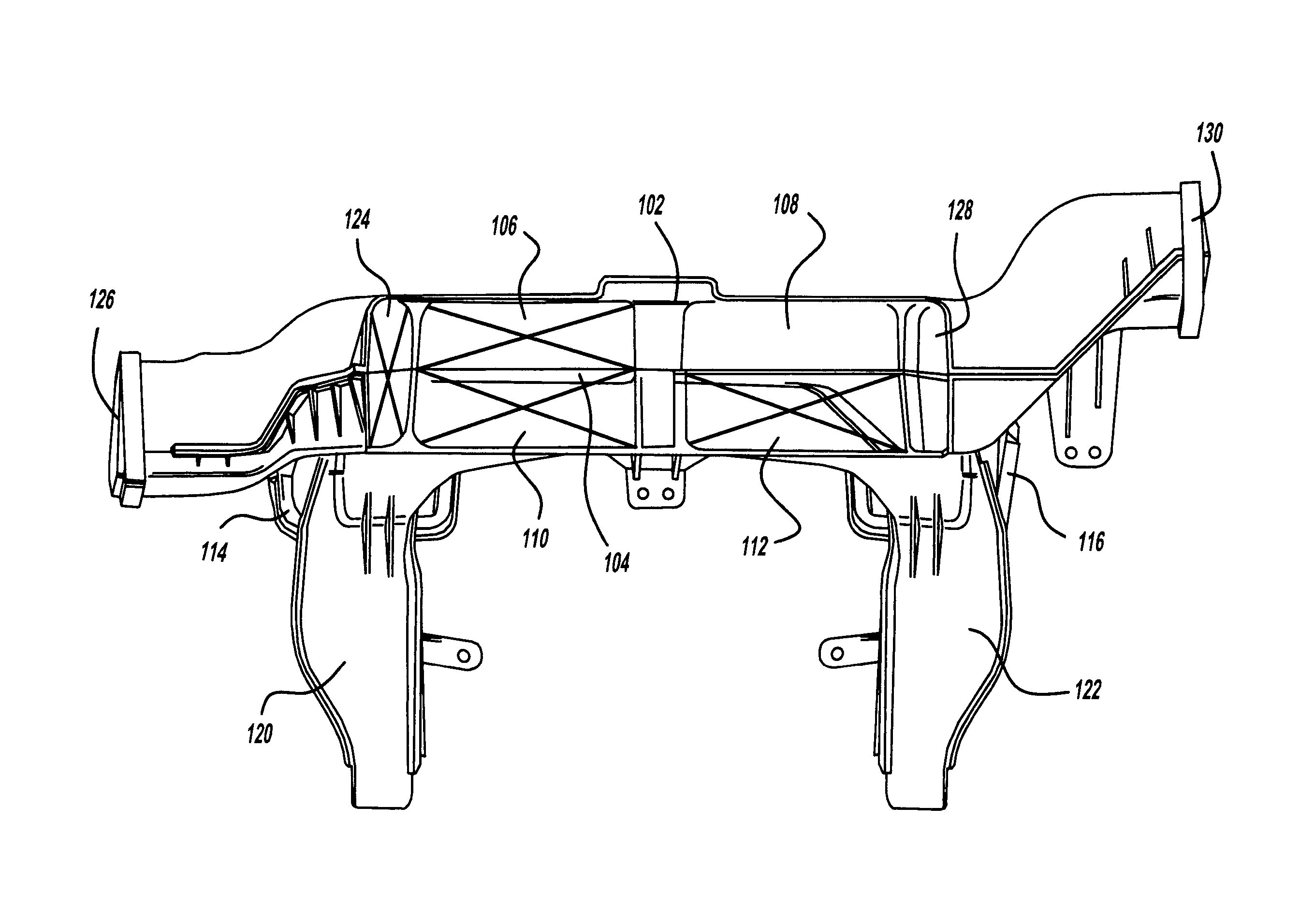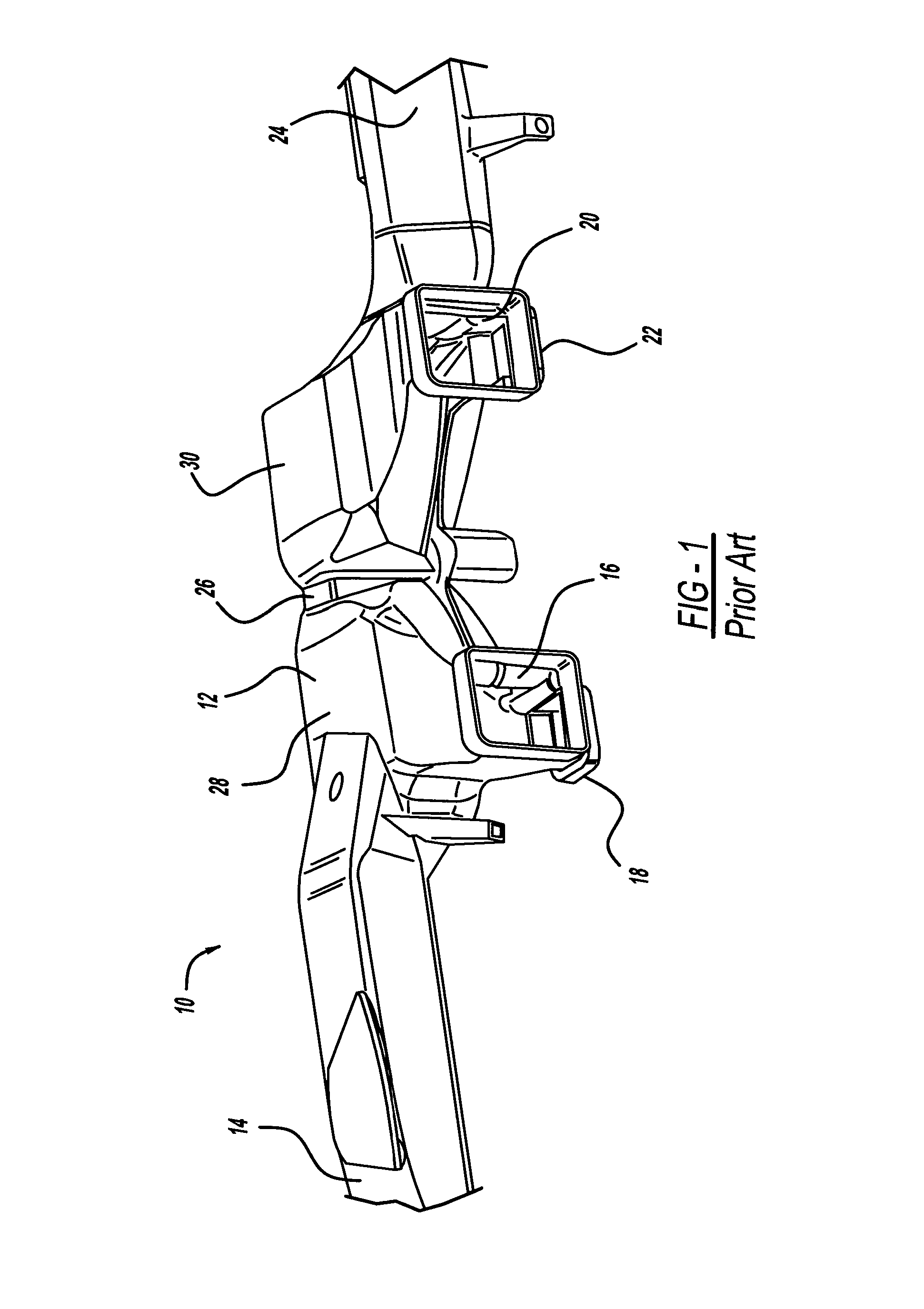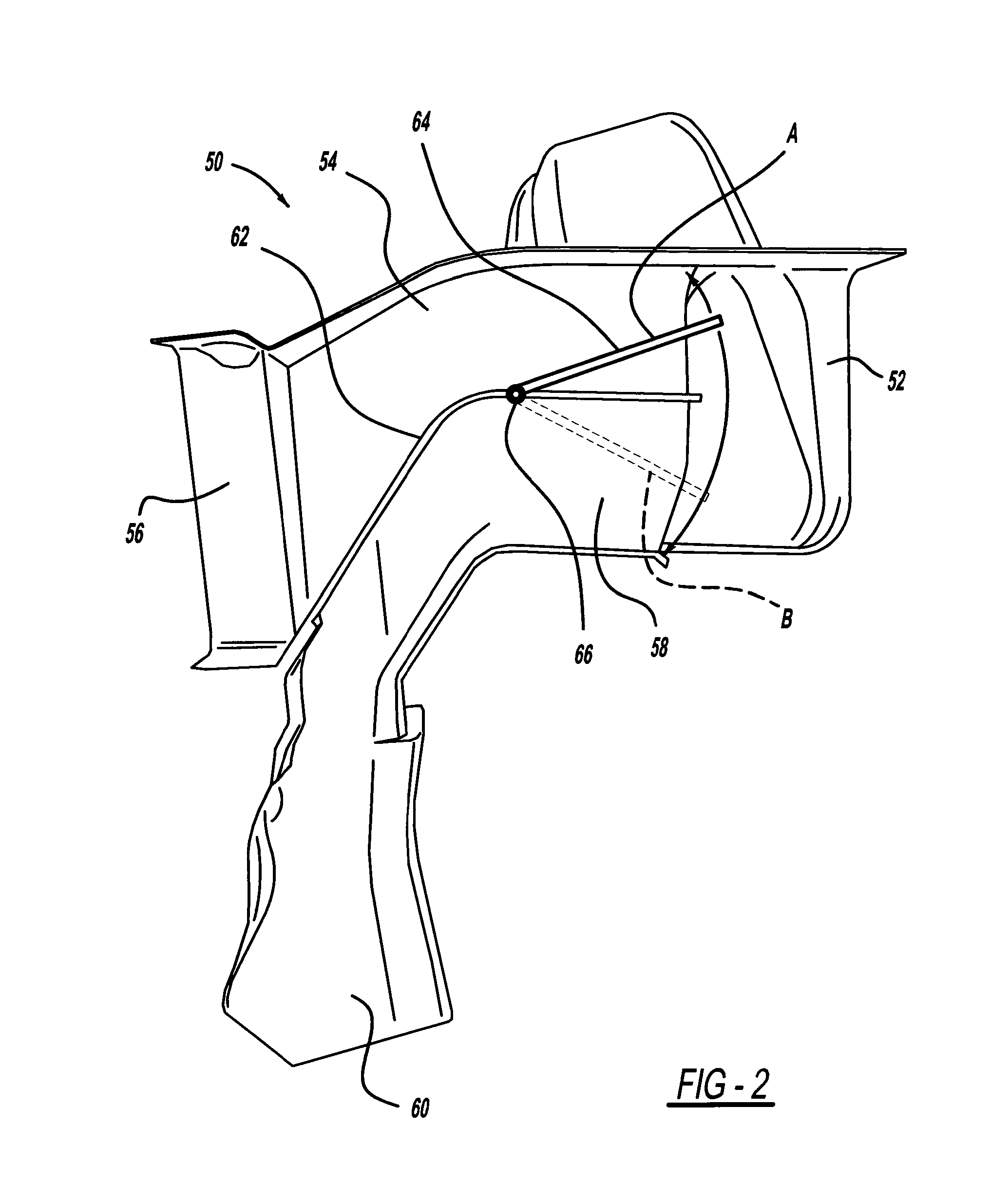Duct architecture for regulating climate zone in a vehicle
a technology of duct system and climate zone, which is applied in the direction of vehicle components, air-flow control members, vehicle heating/cooling devices, etc., can solve the problems that the current design of vehicle air ducts cannot be regulated, and achieve the effects of reducing the total volume of air provided to the duct, reducing the electrical consumption of the hvac blower, and less cooling or heating
- Summary
- Abstract
- Description
- Claims
- Application Information
AI Technical Summary
Benefits of technology
Problems solved by technology
Method used
Image
Examples
Embodiment Construction
[0013]In the following figures, the same reference numerals are used to refer to the same components. In the following description, various operating parameters and components are described for one constructed embodiment. These specific parameters and components are included as examples and are not meant to be limiting.
[0014]With reference to FIG. 1, a perspective view is shown of an airflow distribution duct according to the known art, generally illustrated as 10. The airflow distribution duct 10 includes a body 12, a first outlet 14, a second outlet 16, a third outlet 18, a fourth outlet 20, a fifth outlet 22, and a sixth outlet 24. There can be a greater or lesser number of outlets as is known in the art and the arrangement shown is only for illustrative purposes as representing the state of the prior art. Of particular interest is the body 12 which conventionally includes a plenum section for receiving inflowing air coming from the HVAC to which individual outlets 14, 16, 18, 20...
PUM
 Login to View More
Login to View More Abstract
Description
Claims
Application Information
 Login to View More
Login to View More - R&D
- Intellectual Property
- Life Sciences
- Materials
- Tech Scout
- Unparalleled Data Quality
- Higher Quality Content
- 60% Fewer Hallucinations
Browse by: Latest US Patents, China's latest patents, Technical Efficacy Thesaurus, Application Domain, Technology Topic, Popular Technical Reports.
© 2025 PatSnap. All rights reserved.Legal|Privacy policy|Modern Slavery Act Transparency Statement|Sitemap|About US| Contact US: help@patsnap.com



